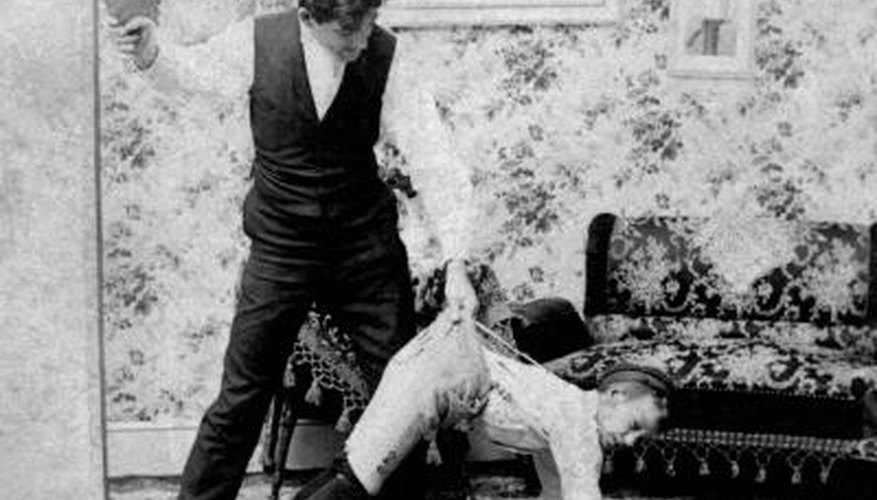Spanking children as punishment long has been a subject of controversy. Some say that it teaches children discipline by employing a benign and mostly harmless form of corporal punishment, while others say that it is cruel, abusive and teaches children to be violent. For decades, spanking a child was considered totally acceptable, and while some parents still believe it to have many advantages its detractors also speak of the disadvantages associated with spanking.
Spanking a Child when Nothing Else Works
Those who believe that it is acceptable to spank a child are quick to point out that spanking should only be used as a last resort when no other forms of punishment work. Children who misbehave and are faced with less severe punishments may believe that they are "getting off easy" and won't learn how to behave. Spanking a child for a severe punishment lets the child know where his parents have drawn the line over what kind of behaviour is acceptable and what is not. Without going to that extreme (if you can call spanking an extreme), a child might not learn that certain actions have serious consequences.
- Those who believe that it is acceptable to spank a child are quick to point out that spanking should only be used as a last resort when no other forms of punishment work.
- Spanking a child for a severe punishment lets the child know where his parents have drawn the line over what kind of behaviour is acceptable and what is not.
Spanking Brings Misbehavior to an Immediate End
Spanking a child does have the advantage of being an immediate response to an action. Sending a child to his room to think about what he has done might work just fine for some children, but as punishments go it works fairly slowly. Some children simply do not understand why they are being punished or know what they did was wrong. Some children do not even see being sent to their room as a punishment. On the other hand, a child immediately understands that he is being punished when he is being spanked. It causes immediate pain and is seen as a direct consequence of misbehavior even though it does little physical harm to the child.
- Spanking a child does have the advantage of being an immediate response to an action.
- Some children simply do not understand why they are being punished or know what they did was wrong.
Spanking Can Teach Aggressive Behavior
Spanking is intended to stop bad behaviour in children, but some studies have implied that it does exactly the opposite. Many childcare and psychology experts claim that spanking only teaches a child that violence is an acceptable form of punishment. If a child grows up with this attitude, he could use violence to solve conflicts when there are more acceptable methods of resolution. A study performed at Tulane University showed that children who were spanked more than twice a month from the age of 3 until the age of 5 were 50 per cent more likely to engage in aggressive behaviours by the time they were 5 years old.
- Spanking is intended to stop bad behaviour in children, but some studies have implied that it does exactly the opposite.
Spanking Teaches Fear, Not Respect
While spanking a child is thought by its supporters to be a way to teach discipline and respect, other people say that it teaches a child to fear his parents as opposed to respecting them. Spanking often is considered a form of abuse, and abuse victims live in fear of their abusers. There is little respect in an abusive relationship. Those who consider spanking to be child abuse state that children only behave "correctly" out of fear of being spanked. They do not follow rules out of feelings of love and respect; they follow rules out of fear. They learn to avoid punishment, not that it is important to follow rules.
- While spanking a child is thought by its supporters to be a way to teach discipline and respect, other people say that it teaches a child to fear his parents as opposed to respecting them.
- Spanking often is considered a form of abuse, and abuse victims live in fear of their abusers.
